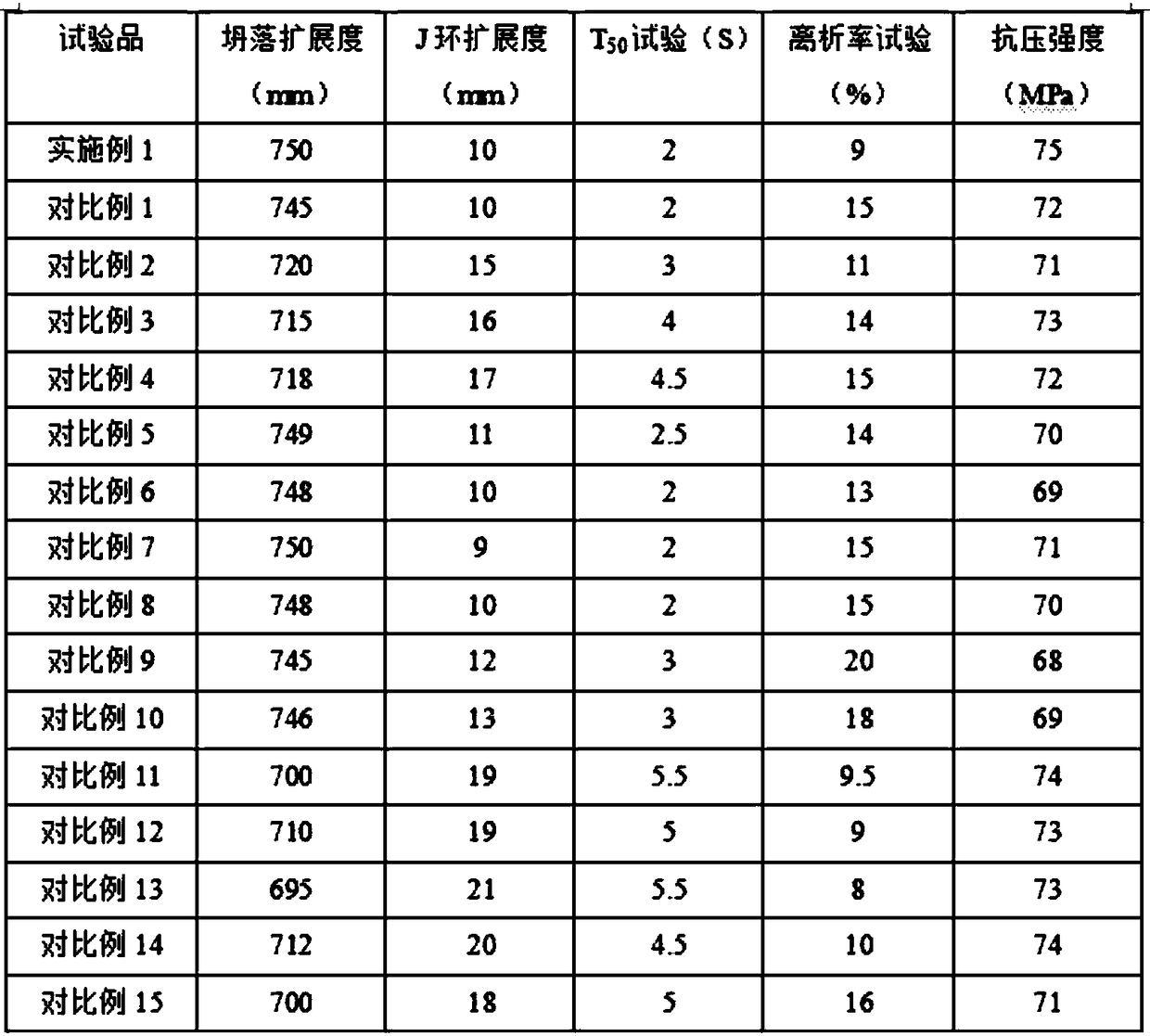Self-compaction composite concrete, preparation method therefor and concrete wall bricks
A concrete and self-compacting technology, applied in the field of building materials, can solve problems such as flood control, water ecological security, threats to people's life and property safety, over-exploitation of natural river beds, loss of mineral resources, etc., to achieve easy control, simple operation, and improved fluidity Effect
- Summary
- Abstract
- Description
- Claims
- Application Information
AI Technical Summary
Problems solved by technology
Method used
Image
Examples
Embodiment 1
[0040] A self-compacting composite concrete, made of A component, B component and C component; wherein A component is prepared from the following raw materials in parts by weight: 23 parts of Portland cement, 7 parts of thiophosphate cement ; B component is prepared from the following raw materials in parts by weight: 45 parts of slag, 14 parts of steel slag, 32 parts of iron tailings, 13 parts of bamboo charcoal fiber; C component is prepared from the following raw materials in parts by weight: cellulose 2.5 parts of ether, 5.5 parts of β-cyclodextrin, and 1.5 parts of water reducer; among them, thiophosphate cement is prepared from the following raw materials in parts by weight: 7 parts of magnesium oxide, 2.5 parts of dihydrogen phosphate, and 0.9 parts of magnesium sulfate , 0.3 parts of borax, 0.6 parts of iron tailings, and 0.4 parts of fly ash.
Embodiment 2
[0042] A self-compacting composite concrete, which is made of components A, B and C; wherein component A is prepared from the following raw materials in parts by weight: 20 parts of Portland cement, 6 parts of thiophosphate cement ; B component is prepared from the following raw materials in parts by weight: 40 parts of slag, 12 parts of steel slag, 30 parts of iron tailings, 12 parts of bamboo charcoal fiber; C component is prepared from the following raw materials in parts by weight: cellulose 2 parts of ether, 5 parts of β-cyclodextrin, and 1 part of water reducing agent; among them, thiophosphate cement is prepared from the following raw materials in parts by weight: 6 parts of magnesium oxide, 2 parts of dihydrogen phosphate, and 0.8 part of magnesium sulfate , 0.2 parts of borax, 0.5 parts of iron tailings, and 0.3 parts of fly ash.
Embodiment 3
[0044]A self-compacting composite concrete, which is made of A component, B component and C component; wherein A component is prepared from the following raw materials in parts by weight: 25 parts of Portland cement, 8 parts of thiophosphate cement ; B component is prepared from the following raw materials in parts by weight: 50 parts of slag, 15 parts of steel slag, 35 parts of iron tailings, 15 parts of bamboo charcoal fiber; C component is prepared from the following raw materials in parts by weight: cellulose 3 parts of ether, 6 parts of β-cyclodextrin, and 2 parts of water reducing agent; among them, thiophosphate cement is prepared from the following raw materials in parts by weight: 8 parts of magnesium oxide, 3 parts of dihydrogen phosphate, and 1.0 part of magnesium sulfate , 0.4 parts of borax, 0.8 parts of iron tailings, and 0.4 parts of fly ash.
PUM
| Property | Measurement | Unit |
|---|---|---|
| particle diameter | aaaaa | aaaaa |
| particle diameter | aaaaa | aaaaa |
| particle diameter | aaaaa | aaaaa |
Abstract
Description
Claims
Application Information
 Login to View More
Login to View More - R&D
- Intellectual Property
- Life Sciences
- Materials
- Tech Scout
- Unparalleled Data Quality
- Higher Quality Content
- 60% Fewer Hallucinations
Browse by: Latest US Patents, China's latest patents, Technical Efficacy Thesaurus, Application Domain, Technology Topic, Popular Technical Reports.
© 2025 PatSnap. All rights reserved.Legal|Privacy policy|Modern Slavery Act Transparency Statement|Sitemap|About US| Contact US: help@patsnap.com

